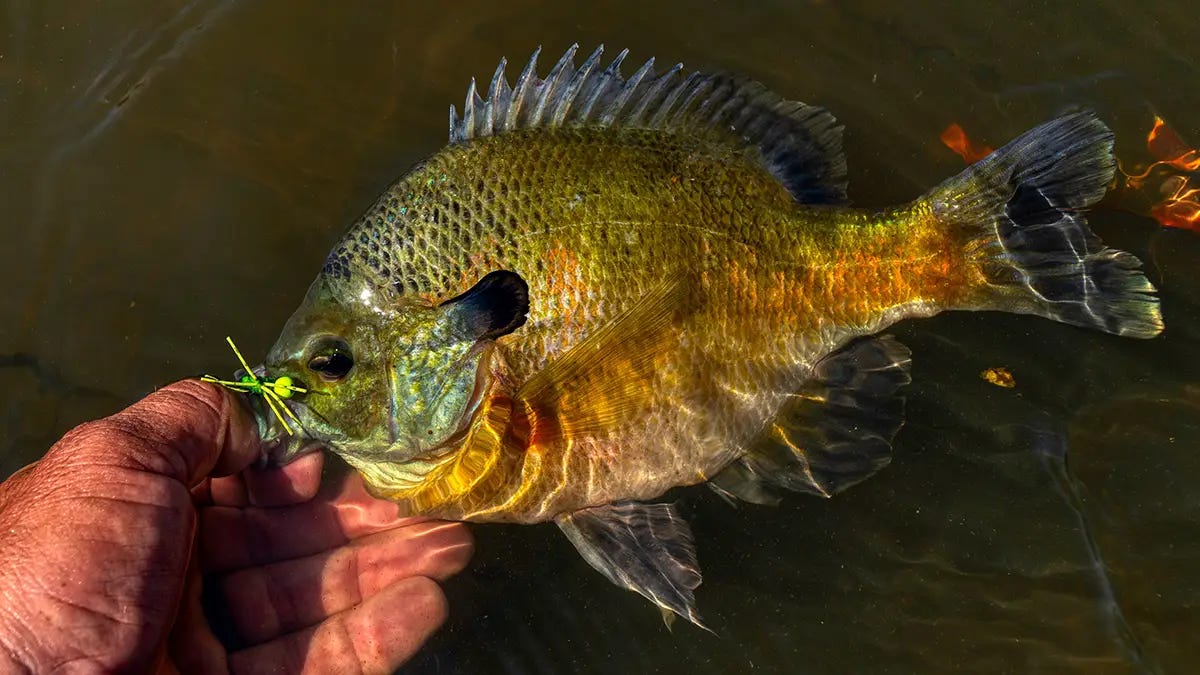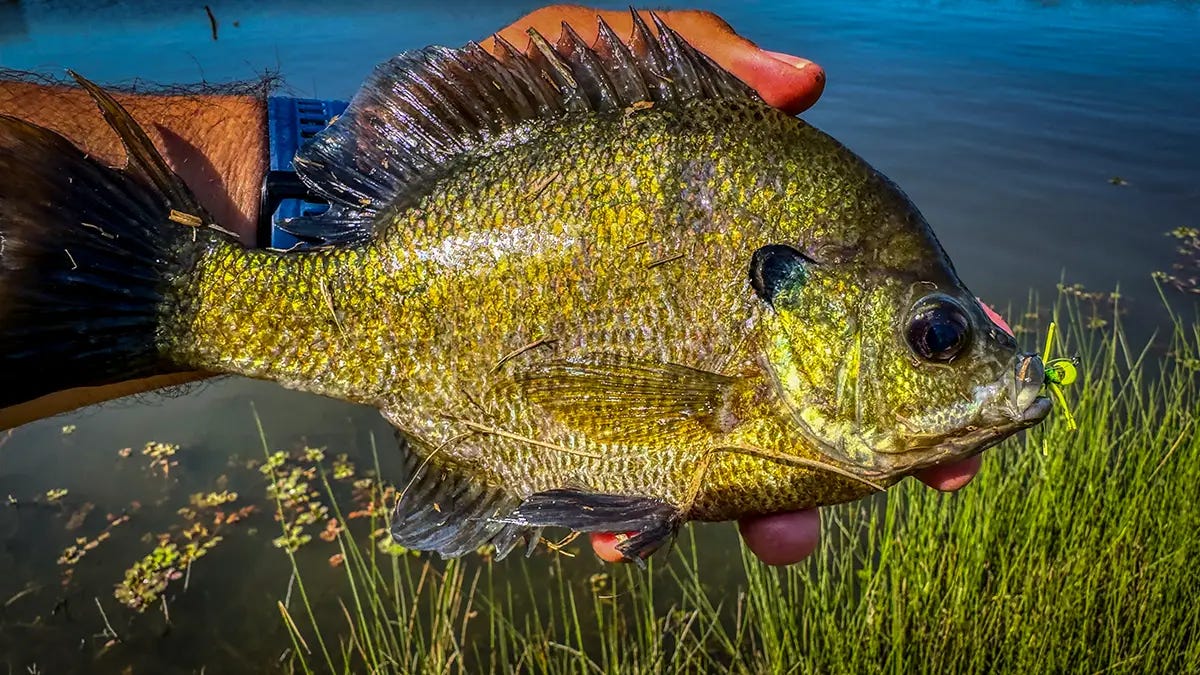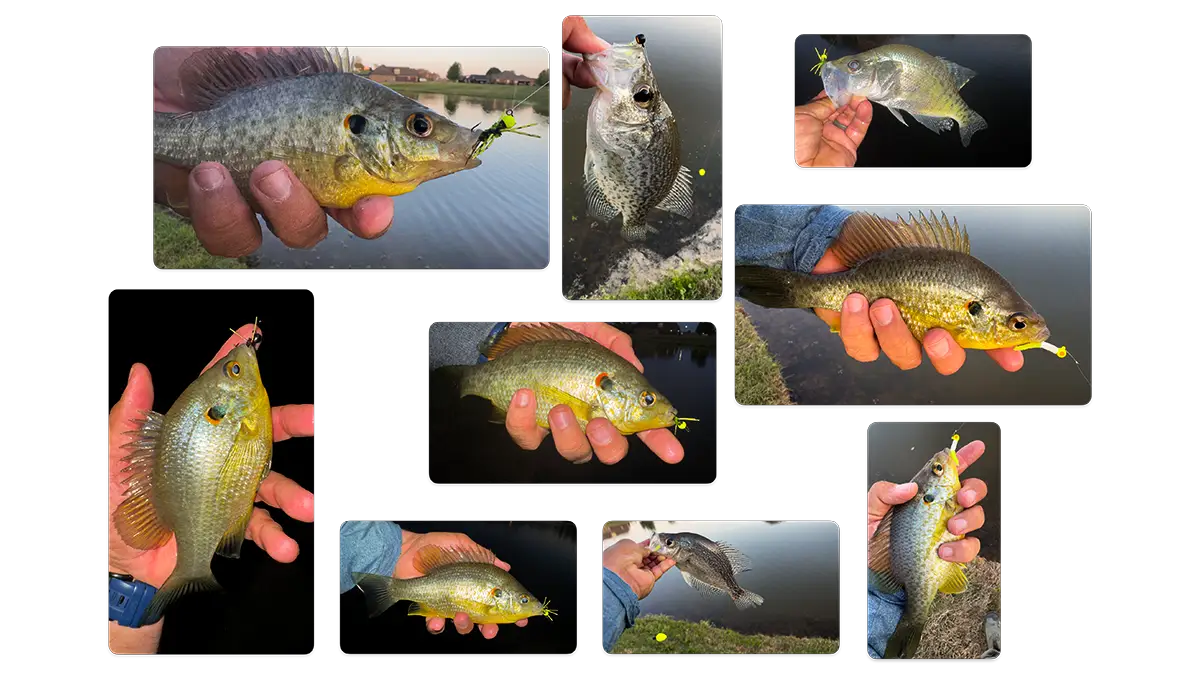Where to Fish for Bluegills in High Water
Understanding what happens when the lakes flood from heavy rains can help you get on some of the best bluegill and panfish fishing of the year
I love to chase bluegills and shellcrackers in the spring. I’ve been fond of it since childhood and I guess it still sparks the inner child in me even in my 50s. But I’m a little more hands-on with my panfish these days, learning to make better lures to trick them, understanding their diets and migrations and the like. I’ve spent the better part of two years understanding their movements on large reservoirs and small lakes alike and have been working with biologists this year to understand their diet preferences and habits this year.
Having established all that, I also have learned quite a bit about their normal patterns as well as their reaction to abnormal conditions, like flooding. Flooding can turn fishing into a feast or famine. It can either put fish in new likely places or completely scatter them to the wind where seemingly no pattern exists.
But there are some things you can do to maximize your fishing opportunities in high water when it comes to panfish. And you will sometimes find the absolute best fishing you’ve ever seen for panfish when you hit it right.
So I thought I’d share a bunch of scenarios that have yielded some of these great fishing opportunities over the years when flooding occurs to help you get on more big panfish during high waters.
MUDDY WATER PUTS THEM ON COVER
When the water goes from pretty clear to very muddy, the fish are forced to adapt rapidly. This often means bluegills that were roaming the shallows are now relating to cover a lot more. Having that hard object to reference gives them a sense of protection and ambush opportunities.
Where fish have seemingly been loose in an area, they can get really predictable by focusing on laydowns, stumps, brush piles, docks, and even edges of grass beds, newly flooded vegetation, and more. It can make targetting them a lot more systematic.
HIGH WATER PUTS THEM ON THE EDGES
More to that point, I’ve seen where fish will relate to the edges of grass cover a lot more during these high water times. They can move up into the shallow cover to feed and then hunker on the edges of the cover when not feeding. That in and out of shallow to deep water makes riding out the flood conditions easier and safer for gills.
I will often cork a hand-tied bug around the edges of grass beds to find big panfish feeding and even spawning at times in these locations. The flooded cover gives them a sense of protection while also keeping them close to ample food sources.
MUDDY WATER PUTS THEM SHALLOWER
I will also find gills very shallow when the water gets high and muddy. Like you are throwing your jig up on a bank and pulling it into the water and getting immediately bit. So I will fish a lot shallower during these flood conditions than I often do any other time of the year.
I have caught some of my biggest shellcrackers in inches of water in flood conditions. And so I am always looking for places where I can easily access the banks when flooded. Sometimes the water is so far back in the trees and cover you can’t effectively fish it.
FLOODED YARDS OPENS THE BUFFET
One place you will find super shallow gills and red ears as well as have access to the shallowest water is by fishing flooded yards or areas of mowed grass that is now underwater. These areas pump tons of new food sources into the water from bugs to worms and of course a plethora of macro invertebrates and microorganisms for the panfish. These flooded yards are a smorgasbord
for hungry panfish and can make them easy pickings.
One of the best days I’ve ever had shellcracker fishing was hopping around from yard to yard targeting red ears with worms. Because those fish I quickly found were up on the grass picking up the worms that had come out of the ground in the flood. I knew this because the first few shellcrackers I threw in my livewell coughed up dozens of small earthworms and clued me in to what I needed to be doing.
I’ve often found something in my livewell that clued me into what panfish want.
LOW LIGHT AMPLIFIES BITE WINDOWS
I am a firm believer that low light is maybe most important when fishing for panfish. I believe this largely due to the fact that bugs, especially aquatic emerging varieties are way more active in these dim windows of light. And so the food chain seems to come alive right after day break and just before dark.
A lake I frequent in Arkansas has a population of bluegills and shellcrackers. I make a point to be there a couple evenings when visiting to maximize me catches in short order. I have fished for hours in the afternoon, to only then have the fish go from 1 or 2 bites here and there for hours to a bite every single cast the last 30 minutes before dark. I have witnessed this so many times that now it’s a gospel I adhere to for panfish.
On a recent outing I fished 3 evenings in a row. From 6:30 to 7:30 I caught maybe 10 panfish. From 7:30 to 8:00 I caught 60-70 crappie, bluegills and shellcrackers fishing the exact areas I had virtually blanked on for the last hour. It’s not that the fish aren’t there. They just aren’t reacting yet to the food activity increases that happen in that last bit of light.
During floods the conditions change a lot but some rules still apply and knowing this can improve your catches dramatically. I will fish shaded areas, early and late, around cover that offers protection and concealment and areas that have flushed new and increased food opportunities into the system.
I keep my tackle simple. A few 1/32 and 1/16 ounce jigheads and small plastics with hand tied bugs as well. I will sometimes resort to red worms on a drop shot and fishing all of the above under a cork. To me it’s not as much about presentation as it is about location and timing during the flood. Get in the right areas and throw something lively and you are going to be rewarded handsomely.







